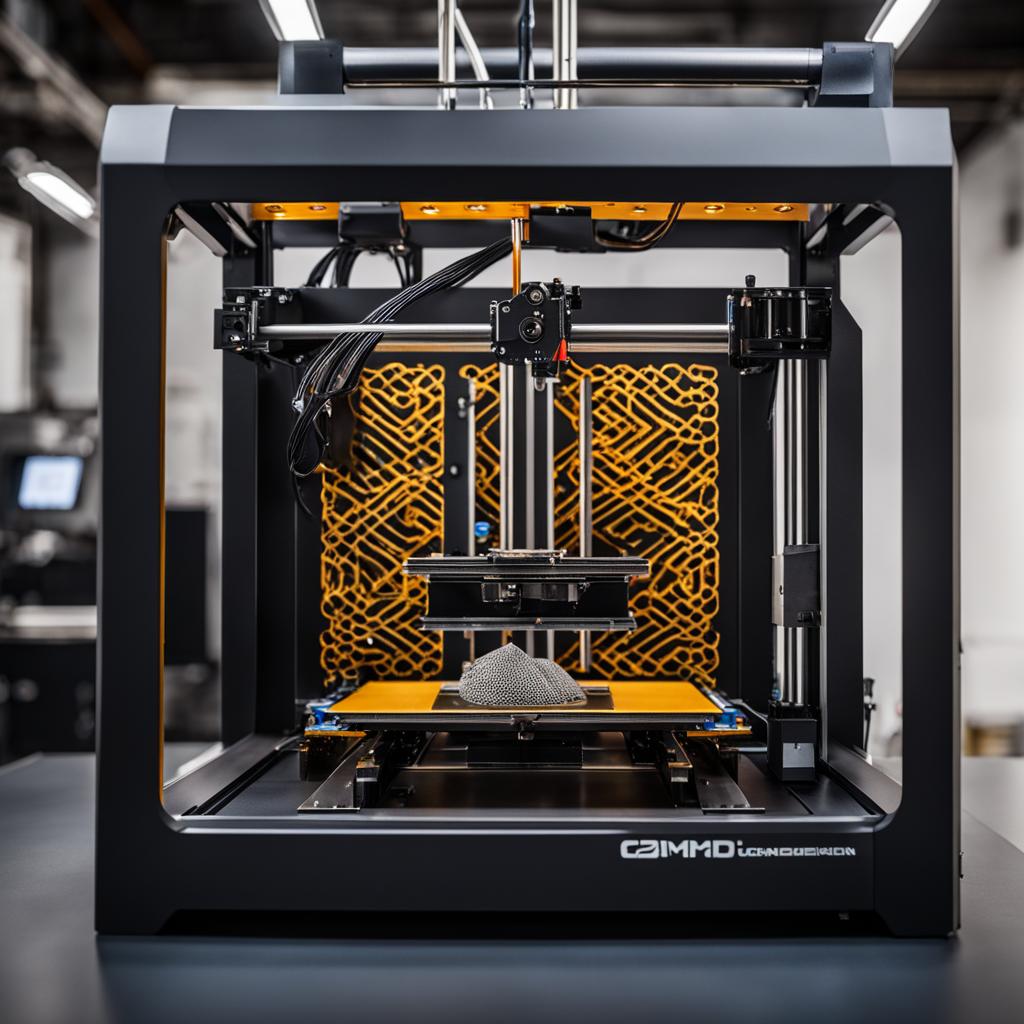3D printing technology has revolutionized many industries and will continue to evolve in the future. 3D printing, also known as additive manufacturing, allows for the creation of three-dimensional objects by adding layers of material. This results in greater efficiency, reduced costs, and countless possibilities for innovation. In addition, 3D printing is more sustainable compared to other production methods, which makes it a promising option for the future.
Advances in 3D printing technology are driving its application in a variety of industries. In the automotive and aerospace industries, 3D printing enables the creation of lighter, more customized parts, improving efficiency and reducing manufacturing costs. In the medical sector, 3D printing is being used to create customized prosthetics and implants, offering better treatments for patients.
In the future, we can expect even more innovations in 3D printing. Technologies such as 4D printing, which allows the creation of objects that transform over time, and the use of more advanced materials such as metals and living tissue, will become increasingly common. In addition, the development of more sophisticated software for modeling and print preparation will contribute to the expansion of the use of this technology.
The impact of 3D printing in the future will be significant. It will play a key role in transforming a range of sectors, from healthcare to industry and education. Product customization, cost reduction and more efficient use of resources are just some of the advantages that 3D printing brings with it.
Main points
- 3D printing technology opens doors to futuristic innovations.
- 3D printing has applications in several sectors.
- Technological advances are driving the potential of 3D printing.
- 3D printing brings economic, social and environmental benefits.
- 3D printing is expected to transform the way we produce and consume.
Sectors that Benefit from 3D Printing
3D printing has been applied in many sectors, bringing significant benefits and transforming the way industries operate. Let’s explore some of the main 3D printing applications in different sectors and the impact it has generated.
Automotive and Aerospace Sector
In the automotive and aerospace sectors, 3D printing has played a key role. It enables the creation of lighter and more complex parts, contributing to weight reduction and improving the efficiency of vehicles and aircraft. In addition, 3D printing allows the production of customized parts and prototypes quickly, speeding up the development process and reducing manufacturing costs.
Medical Sector
The healthcare industry has benefited enormously from 3D printing. It enables the manufacture of customized prosthetics and implants, improving patients’ quality of life. With 3D printing, it is possible to create custom-made medical devices that perfectly fit the individual needs of each patient. This revolutionary technology has provided significant advances in the treatment of diseases and injuries.
Architecture and Engineering Sector
In architecture and engineering, 3D printing offers new creative possibilities. It enables the creation of detailed architectural models and building prototypes quickly and accurately. 3D printing also enables the exploration of complex and innovative designs, making the construction process more efficient and cost-effective.
See too:
Education Sector
3D printing is a powerful tool for education. It provides a hands-on, tangible experience for students, allowing them to create and visualize three-dimensional objects. 3D printing also helps teach complex concepts, such as geometry and design, in a more engaging and understandable way.

Overall, 3D printing has positively impacted several sectors, bringing innovation, efficiency and customization. With the continuous advancement of 3D printing technology, we can expect to see even more applications and benefits in the most diverse fields.
Technological Advances in 3D Printing
3D printing is constantly evolving, driven by technological advances that open up new possibilities and expand the horizons of 3D printing technology. In addition to traditional 3D printing, several innovations have emerged, bringing significant advances and revolutionizing the field.
One such advancement is 4D printing, a technology that enables the creation of objects that go beyond a static three-dimensional format. With 4D printing, it is possible to produce objects that transform, adapt and respond to external stimuli over time. This technology has promising applications in the medical field, enabling the manufacture of adaptable implants that adjust to the specific needs of each patient.

Another significant advance in 3D printing is the use of more advanced materials. In addition to commonly used plastics, it is now possible to print objects in metals, ceramics and even living tissue. This diversity of materials expands the possibilities of 3D printing applications, allowing the creation of more complex and functional pieces.
“Advances in 3D printing technology have transformed the way we view the manufacturing of objects. We can now create sophisticated, customized and adaptable structures, opening up a universe of possibilities for industry and medicine.” – Dr. Renato Silva, 3D printing specialist
Furthermore, the development of more sophisticated software for modeling and print preparation has facilitated the creation process and improved the precision of the objects produced. These tools allow for greater customization and optimization of projects, ensuring more precise and efficient results.
Examples of Advances in 3D Printing
Below is a list of some of the most recent technological advances in the field of 3D printing:
- 4D Printing: objects that transform and adapt over time;
- Advanced materials: printing on metals, ceramics and living tissues;
- More sophisticated modeling and print preparation software;
- Nanoscale printing: production of extremely small objects;
- Multi-material printing: creating objects with different properties in a single print;
- Large-scale printing: using larger 3D printers to manufacture objects on a large scale.
| Technological Advancement | Description |
|---|---|
| 4D Printing | Creation of objects that transform and adapt over time, offering new possibilities in the medical and engineering fields. |
| Advanced Materials | Printing on metals, ceramics and living tissues, expanding the applications and functionality of printed objects. |
| Modeling Software | Development of more sophisticated software for modeling and printing preparation, facilitating the creation process and ensuring greater precision in the results. |
These technological advances are driving the potential of 3D printing, opening up new possibilities and revolutionizing various sectors of the industry. With the constant evolution of technology, it is expected that even more new developments and innovations will emerge in the coming years, offering ever greater benefits to society.
Economic and Social Impact of 3D Printing
3D printing has a significant impact on both the economy and society. With its ability to create replacement parts on-site, reducing costs and lead times, 3D printing provides economic benefits to industries. In addition, product customization and reduced material waste contribute to a more efficient and sustainable economy.
In the social field, 3D printing has the potential to improve people's quality of life. In the healthcare sector, for example, the creation of personalized prosthetics and implants allows for more effective and comfortable treatments for patients. This innovative technology also promotes inclusion, offering opportunities for people in socially vulnerable situations to acquire skills in the area of 3D printing and enter the job market.

Therefore, 3D printing has significant potential in the economy and society. Its impact goes beyond industrial efficiency, encompassing social, economic and environmental benefits. Through continuous innovation, 3D printing will continue to transform the way we produce and consume, thus shaping the future of the economy and society.
Conclusion
O future of 3D printing The future is quite promising, with a wide range of trends and innovations on the horizon. Technology will continue to evolve, bringing advances in terms of both technological capabilities and more advanced and accessible materials. 3D printing is expected to have an increasing impact on a variety of sectors, especially in healthcare, industry and education.
3D printing offers a range of economic, social and environmental benefits. It enables the creation of personalized objects, contributing to cost reduction and more efficient use of resources. In addition, this technology has the potential to improve people's quality of life, especially in the field of health, where the manufacture of personalized prosthetics and implants can bring significant benefits.
O future of 3D printing is full of possibilities and promises to transform the way we produce and consume. As this technology continues to develop, we can expect to see greater integration of 3D printing into our everyday lives, with increasingly innovative applications and surprising results. 3D printing trends point to a future where personalization, sustainability and efficiency will be increasingly valued, driving the growth of this ever-evolving industry.



